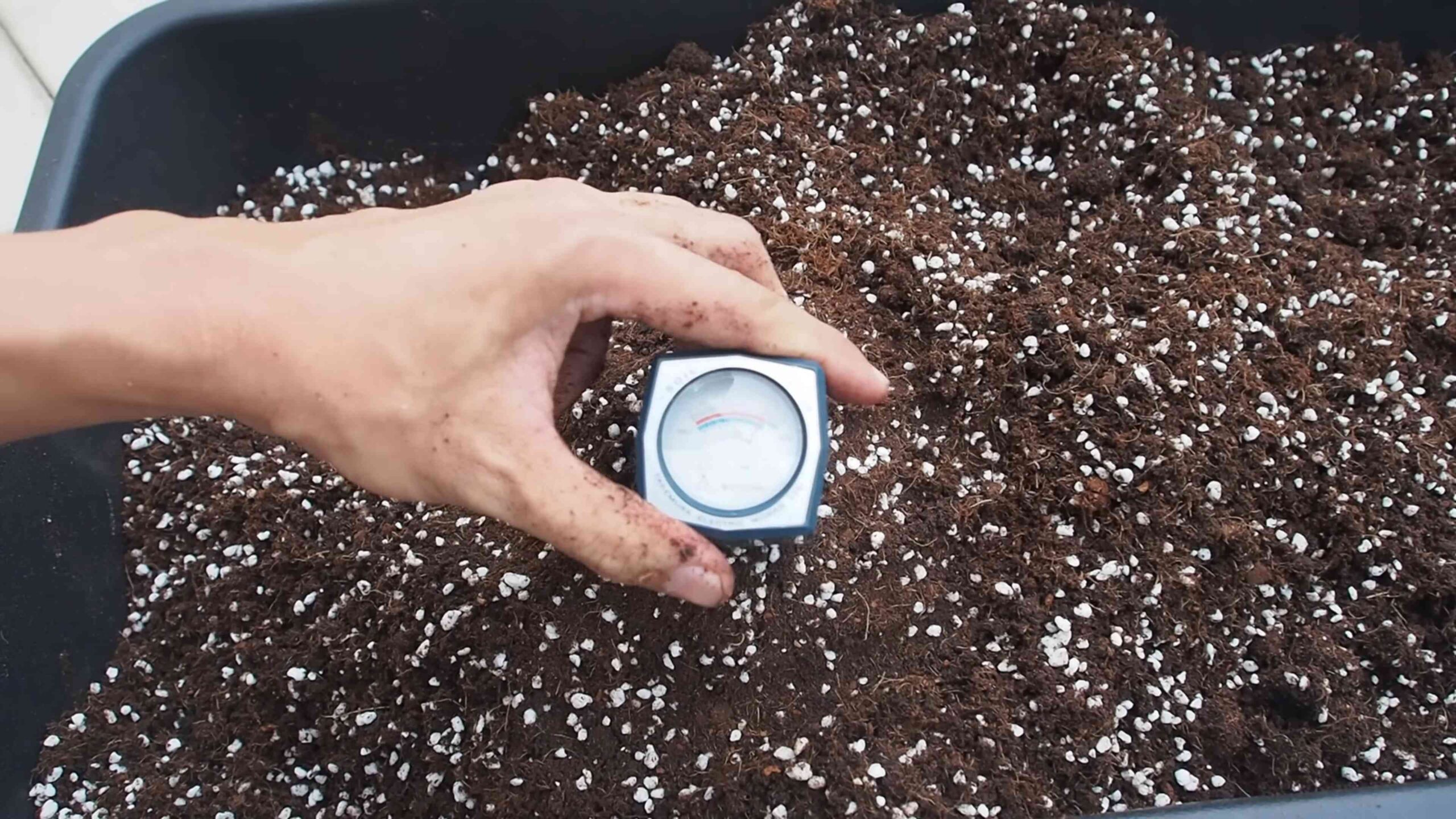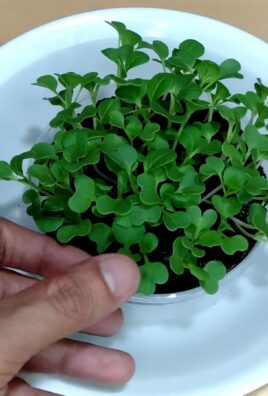Growing grapes in containers might sound like a vineyard dream reserved for sprawling estates, but I’m here to tell you it’s totally achievable, even if your “estate” is a cozy balcony or a sunny patio! Forget the sprawling vineyards of Napa Valley for a moment; we’re bringing the taste of sunshine and homemade goodness right to your doorstep.
For centuries, grapes have been cultivated and cherished, not just for their delicious fruit, but also for their symbolic significance. From ancient Roman feasts to the heart of winemaking traditions, grapes represent abundance, celebration, and the simple pleasures of life. But you don’t need to be a seasoned vintner to enjoy the fruits (pun intended!) of your labor.
Why should you consider growing grapes in containers? Well, imagine plucking fresh, juicy grapes right off the vine, knowing exactly where they came from and how they were grown. No more mystery ingredients or questionable pesticides! Plus, it’s incredibly rewarding to nurture a plant from a tiny seedling to a bountiful producer. This DIY project is perfect for anyone with limited space, a desire for fresh, homegrown produce, or simply a love for getting their hands dirty. I’m going to show you some simple tricks and hacks that will make growing grapes in containers a breeze, even if you’ve never gardened before. Let’s get started and transform your outdoor space into a mini-vineyard!

Growing Grapes in Containers: A Beginner’s Guide
Hey there, fellow gardening enthusiasts! Ever dreamt of plucking juicy grapes right from your own patio? Well, dream no more! Growing grapes in containers is totally achievable, even if you don’t have acres of land. I’ve been doing it for a few years now, and let me tell you, the satisfaction of harvesting your own grapes is unbeatable. This guide will walk you through everything you need to know to successfully grow grapes in containers, from choosing the right variety to pruning like a pro.
Choosing the Right Grape Variety
Not all grape varieties are created equal, especially when it comes to container gardening. You’ll want to select a variety that’s well-suited for smaller spaces and container life. Here’s what to consider:
* Size and Vigor: Opt for compact or dwarf varieties. These won’t outgrow their container as quickly as more vigorous types.
* Disease Resistance: Choose varieties known for their resistance to common grape diseases like powdery mildew and black rot. This will save you a lot of headaches (and fungicide applications!) down the line.
* Climate: Select a variety that’s appropriate for your local climate. Consider your region’s growing season length and winter hardiness.
* Purpose: Think about what you want to do with your grapes. Are you planning to make wine, juice, or just enjoy them fresh? Different varieties are better suited for different purposes.
Some excellent grape varieties for container gardening include:
* ‘Himrod’ Seedless: A popular white seedless grape that’s known for its sweetness and disease resistance. It’s a great choice for eating fresh.
* ‘Reliance’ Seedless: A hardy red seedless grape that’s also very sweet and disease-resistant. It’s a good all-around choice.
* ‘Vanessa’ Seedless: Another excellent red seedless grape with good flavor and disease resistance.
* ‘Jupiter’ Seedless: A blue-black seedless grape that’s known for its large clusters and excellent flavor.
* ‘Thompson Seedless’: While vigorous, with proper pruning, this classic green grape can be grown in a large container. Be prepared to prune frequently.
* ‘Pinot Meunier’: A black grape variety used in Champagne production. It is more compact than other wine grape varieties.
Gathering Your Supplies
Before you start planting, make sure you have everything you need. Here’s a checklist:
* Large Container: Choose a container that’s at least 20-24 inches in diameter and depth. The bigger, the better! Good drainage is crucial, so make sure your container has drainage holes.
* Potting Mix: Use a high-quality potting mix that’s well-draining and contains organic matter. Avoid using garden soil, as it can become compacted in containers.
* Grapevine: Purchase a healthy, one-year-old grapevine from a reputable nursery.
* Trellis or Support: Grapes need something to climb on. A trellis, arbor, or even a sturdy stake will work.
* Pruning Shears: Invest in a good pair of pruning shears for shaping and maintaining your grapevine.
* Fertilizer: Use a balanced fertilizer specifically formulated for grapes or fruit trees.
* Watering Can or Hose: You’ll need a way to water your grapevine regularly.
* Gloves: Protect your hands from thorns and dirt.
Planting Your Grapevine
Now for the fun part – planting! Here’s how to get your grapevine off to a great start:
1. Prepare the Container: Place a layer of gravel or broken pottery at the bottom of the container to improve drainage.
2. Fill with Potting Mix: Fill the container with potting mix, leaving a few inches of space at the top.
3. Plant the Grapevine: Gently remove the grapevine from its nursery pot and loosen any circling roots. Place the grapevine in the center of the container, making sure the top of the root ball is level with the soil surface.
4. Backfill with Potting Mix: Fill in the remaining space around the grapevine with potting mix, gently firming the soil.
5. Water Thoroughly: Water the grapevine thoroughly until water drains out of the drainage holes.
6. Install Trellis or Support: Install your trellis or support system near the grapevine. Gently tie the main stem of the grapevine to the support.
Caring for Your Container Grapevine
Once your grapevine is planted, it’s important to provide it with the care it needs to thrive. Here’s what to keep in mind:
* Watering: Water your grapevine regularly, especially during hot, dry weather. Check the soil moisture regularly and water when the top inch of soil feels dry to the touch. Avoid overwatering, as this can lead to root rot.
* Fertilizing: Fertilize your grapevine in the spring and early summer with a balanced fertilizer. Follow the instructions on the fertilizer label.
* Sunlight: Grapes need at least 6-8 hours of sunlight per day. Place your container in a sunny location.
* Pruning: Pruning is essential for maintaining the shape and productivity of your grapevine. Prune in late winter or early spring, before new growth begins.
* Pest and Disease Control: Monitor your grapevine regularly for pests and diseases. Treat any problems promptly with appropriate organic or chemical controls.
* Winter Protection: In colder climates, you may need to protect your grapevine from freezing temperatures. Move the container to a sheltered location, such as a garage or shed, or wrap the container with burlap.
Pruning Your Container Grapevine
Pruning can seem intimidating, but it’s actually quite simple once you understand the basics. The goal of pruning is to remove dead, damaged, or unproductive wood, and to encourage the growth of new, fruit-bearing shoots.
Here’s a simplified guide to pruning container grapevines:
1. First Year: Focus on establishing a strong trunk. Select the strongest shoot and tie it to the trellis. Remove all other shoots.
2. Second Year: Select two or three strong shoots (cordons) to train along the trellis. These will become the main arms of the grapevine. Prune back any other shoots.
3. Third Year and Beyond: Prune back the cordons to about 6-8 buds each. These buds will produce the fruiting shoots for the current year. Remove any dead, damaged, or crossing branches.
Important Pruning Tips:
* Always use sharp, clean pruning shears.
* Make clean cuts at a 45-degree angle, just above a bud.
* Remove any suckers (shoots that grow from the base of the plant) and water sprouts (vigorous, non-fruiting shoots).
* Don’t be afraid to prune! Grapes are vigorous plants and can tolerate heavy pruning.
Harvesting Your Grapes
The moment you’ve been waiting for! Harvesting your grapes is the reward for all your hard work. Here’s how to know when your grapes are ripe:
* Taste Test: The best way to determine if your grapes are ripe is to taste them. They should be sweet and juicy, with a good balance of acidity.
* Color: The color of the grapes should be uniform and characteristic of the variety.
* Ease of Removal: Ripe grapes should detach easily from the vine.
To harvest your grapes, use pruning shears to cut the clusters from the vine. Handle the grapes gently to avoid bruising.
Troubleshooting Common Problems
Even with the best care, you may encounter some problems when growing grapes in containers. Here are some common issues and how to address them:
* Powdery Mildew: A fungal disease that causes a white, powdery coating on the leaves and grapes. Treat with a fungicide specifically labeled for powdery mildew. Ensure good air circulation around the plant.
* Black Rot: Another fungal disease that causes dark, sunken spots on the leaves and grapes. Treat with a fungicide specifically labeled for black rot. Remove and destroy any infected leaves or grapes.
* Japanese Beetles: These pests can skeletonize the leaves of your grapevine. Handpick the beetles off the plant or use an insecticide specifically labeled for Japanese beetles.
* Lack of Fruit: This could be due to a number of factors, including insufficient sunlight, improper pruning, or lack of pollination. Make sure your grapevine is getting enough sunlight, prune it correctly, and consider hand-pollinating the flowers if necessary.
* Yellowing Leaves: This could be a sign of nutrient deficiency. Fertilize your grapevine with a balanced fertilizer.
Enjoying Your Homegrown Grapes
Congratulations! You’ve successfully grown grapes in containers. Now it’s time to enjoy the fruits (literally!) of your labor. Eat them fresh, make juice, or even try your hand at winemaking. The

Conclusion
So, there you have it! Growing grapes in containers isn’t just a whimsical dream for those without sprawling vineyards; it’s a tangible reality accessible to anyone with a sunny patio, balcony, or even a well-lit indoor space. We’ve walked through the essential steps, from selecting the right grape variety and container size to providing the necessary support and care. The beauty of this DIY project lies not only in the potential for harvesting your own sweet, juicy grapes but also in the sheer joy of nurturing a plant from its humble beginnings to a thriving, fruit-bearing vine.
Why is this a must-try? Because it empowers you to cultivate a piece of the countryside, regardless of your living situation. Imagine plucking sun-ripened grapes straight from your container, knowing you nurtured them every step of the way. The taste is simply unmatched. Beyond the delicious reward, growing grapes in containers offers a unique opportunity to connect with nature, learn about plant life cycles, and even impress your friends and family with your green thumb.
But the fun doesn’t stop there! Feel free to experiment with different grape varieties to find your perfect flavor profile. Try training your vines into unique shapes or patterns for an added aesthetic touch. Consider companion planting herbs like basil or rosemary in the same container to deter pests and enhance the overall health of your grapevines. You could even explore different soil amendments to optimize nutrient uptake and fruit production. The possibilities are truly endless!
We wholeheartedly encourage you to embark on this rewarding journey of growing grapes in containers. Don’t be intimidated by the perceived complexity; with a little patience and dedication, you’ll be amazed at what you can achieve. And most importantly, we want to hear about your experiences! Share your successes, your challenges, and your unique tips and tricks in the comments below. Let’s create a community of container grape growers and learn from each other’s journeys. Your insights could inspire others to take the plunge and discover the joy of homegrown grapes. So, grab your gardening gloves, choose your favorite grape variety, and get ready to experience the satisfaction of harvesting your own delicious fruit. Happy growing!
Frequently Asked Questions (FAQ)
What are the best grape varieties for container growing?
Choosing the right grape variety is crucial for success when growing grapes in containers. Look for varieties that are naturally compact and well-suited to smaller spaces. Some excellent options include:
* ‘Himrod’ Seedless: A popular choice for its sweet, seedless grapes and vigorous growth.
* ‘Reliance’ Seedless: Another reliable seedless variety known for its cold hardiness and disease resistance.
* ‘Vanessa’ Seedless: Produces large, red seedless grapes with a crisp texture and sweet flavor.
* ‘Pinot Meunier’: A classic wine grape that can also be grown in containers, producing small, flavorful grapes.
* ‘Thompson Seedless’: While vigorous, it can be managed with pruning and is a widely available and popular choice.
Consider your local climate and choose varieties that are known to thrive in your region. Local nurseries can provide valuable advice on the best options for your specific area.
How big should my container be for growing grapes?
The size of your container is a critical factor in the success of your container grape growing endeavor. A general rule of thumb is to choose a container that is at least 15-20 gallons in size. This will provide ample space for the roots to develop and support the growth of the vine. Larger containers are generally better, as they offer more room for root growth and help to retain moisture. Ensure the container has adequate drainage holes to prevent waterlogging, which can be detrimental to grapevines.
What type of soil is best for container-grown grapes?
Grapes thrive in well-draining soil that is rich in organic matter. A good potting mix for container-grown grapes should consist of a blend of:
* Potting soil: Provides a base for the mix and helps to retain moisture.
* Compost: Adds essential nutrients and improves soil structure.
* Perlite or vermiculite: Enhances drainage and aeration.
Avoid using garden soil in containers, as it can become compacted and poorly drained. A slightly acidic to neutral pH (around 6.0-7.0) is ideal for grapevines. You can test the pH of your soil using a soil testing kit and amend it as needed.
How often should I water my container-grown grapes?
Watering frequency will depend on factors such as the weather, the size of your container, and the type of soil you are using. As a general guideline, water your grapevines deeply whenever the top inch of soil feels dry to the touch. Avoid overwatering, as this can lead to root rot. During hot, dry weather, you may need to water your vines more frequently. Check the soil moisture regularly and adjust your watering schedule accordingly.
How much sunlight do container-grown grapes need?
Grapes require at least 6-8 hours of direct sunlight per day to thrive and produce fruit. Choose a location for your container that receives ample sunlight throughout the day. If you live in a particularly hot climate, you may need to provide some afternoon shade to protect the vines from scorching.
Do I need to prune my container-grown grapes?
Pruning is essential for maintaining the health and productivity of your container-grown grapes. Pruning helps to control the size and shape of the vine, improve air circulation, and encourage fruit production. The best time to prune grapes is during the dormant season, typically in late winter or early spring. Remove any dead, damaged, or diseased wood, and thin out the vine to allow for better sunlight penetration. Consult a grape pruning guide for specific instructions on how to prune your chosen variety.
How do I fertilize my container-grown grapes?
Container-grown grapes require regular fertilization to provide them with the nutrients they need to grow and produce fruit. Use a balanced fertilizer specifically formulated for fruit trees or grapevines. Follow the instructions on the fertilizer label for application rates and frequency. Fertilize your vines in the spring, just as new growth begins to emerge. You can also apply a second dose of fertilizer in the early summer. Avoid over-fertilizing, as this can lead to excessive vegetative growth at the expense of fruit production.
How do I protect my container-grown grapes from pests and diseases?
Container-grown grapes are susceptible to various pests and diseases, such as aphids, spider mites, powdery mildew, and black rot. Regularly inspect your vines for signs of infestation or disease. Treat any problems promptly with appropriate organic or chemical controls. Good air circulation and proper pruning can help to prevent many common grape diseases. Consider using insecticidal soap or horticultural oil to control pests.
Can I move my container-grown grapes indoors for the winter?
If you live in a region with harsh winters, you may need to move your container-grown grapes indoors to protect them from freezing temperatures. Before bringing your vines indoors, prune them back and remove any remaining leaves. Store the container in a cool, dark, and frost-free location, such as a garage or basement. Water the vines sparingly during the winter months, just enough to keep the soil from completely drying out. In the spring, gradually acclimate the vines to outdoor conditions before placing them back in their sunny location.
How long does it take for container-grown grapes to produce fruit?
It typically takes 2-3 years for container-grown grapes to begin producing fruit. Be patient and continue to provide your vines with proper care, and you will eventually be rewarded with a bountiful harvest of delicious grapes. The first year focuses on root development, the second on vine growth, and by the third year, you should see your first grapes.





Leave a Comment